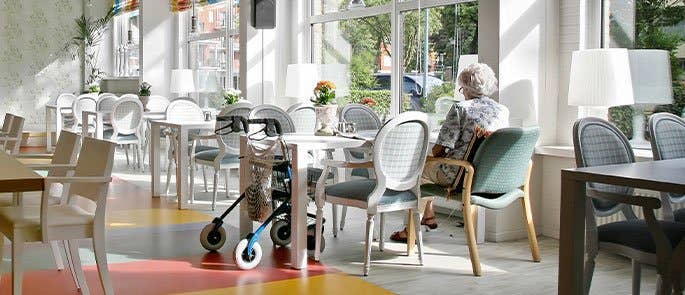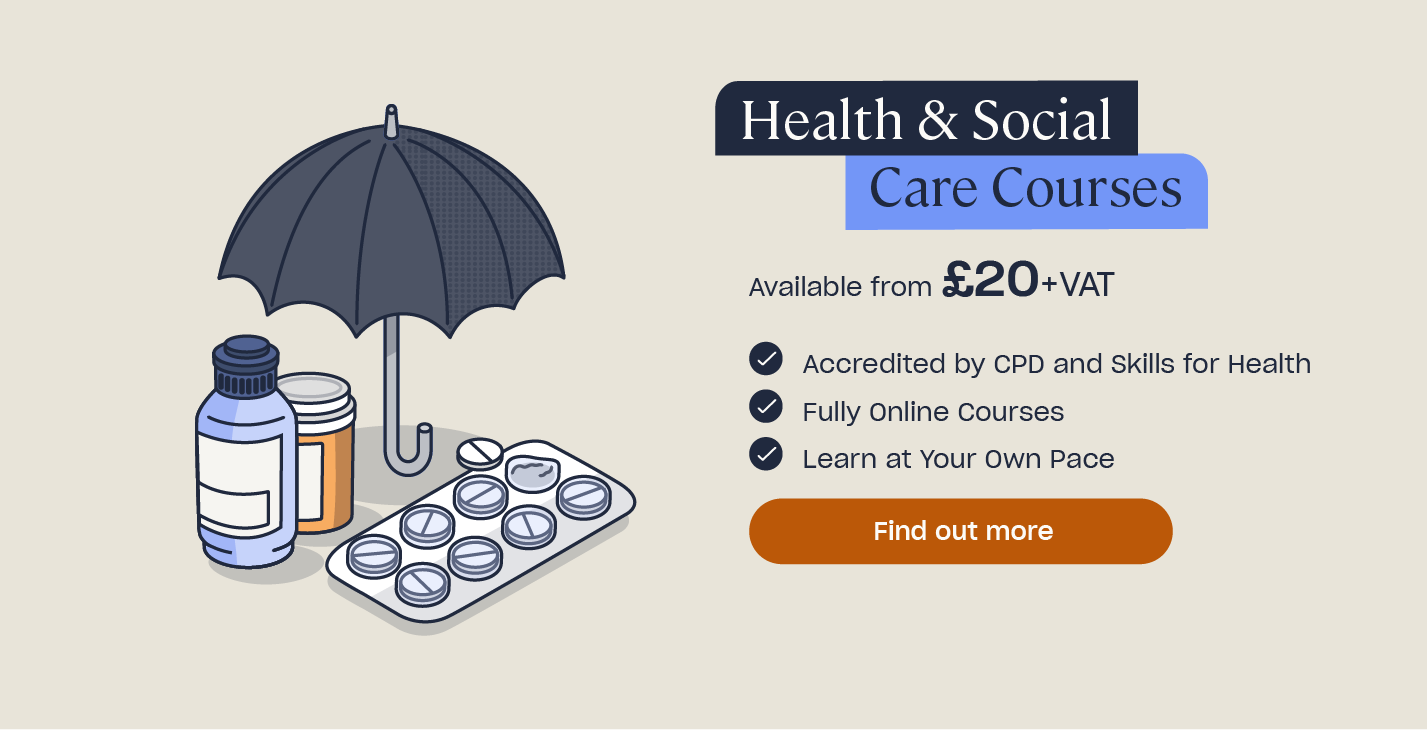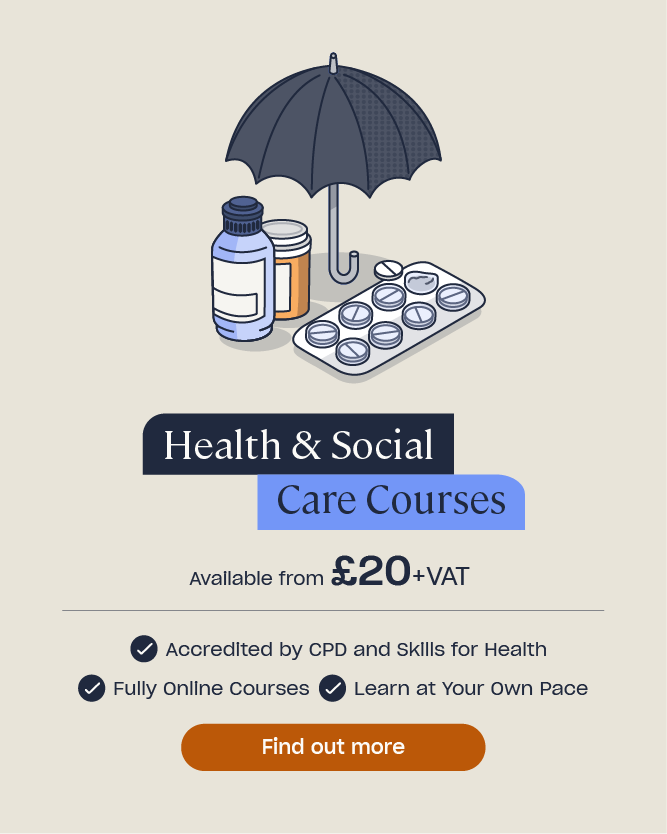Guidance on Neglect in Care Homes
Adults in care homes have the right to be treated with respect, care and dignity. They must be able to trust those around them to maintain their safety and act in their best interests. Unfortunately, this is not always the case and those in care homes can be subjected to abuse and neglect in the very environment in which they should be protected. In this article we will outline what neglect is and why it is a serious safeguarding issue in care homes. We will also explore signs of neglect that you can look out for and how to report any safeguarding concerns that you may have.
What is Neglect?
Neglect is the persistent failure to meet an individual’s basic physical and/or psychological needs. Neglect is often associated with children as their youth typically means they cannot fulfil these basic needs themselves. However, vulnerable adults such as those in a care home, can also be neglected. It may manifest as them not being given enough food, being left without help to wash or change clothes or not being given the necessary medical attention.
Neglect in care homes is a wide spread and serious issue. In 2024 the BBC analysed statistics from the Care Quality Commission (CQC) and found that more than 2,500 care homes across England were rated as ‘requiring improvement,’ the second lowest score rating available. In the same year there were 194 care homes across England that were deemed ‘inadequate,’ the lowest rating possible.

Care Rights UK, a charity focused on promoting the rights of older people in care, highlights the lack of person centred care, inadequate training and poor staff retention as notable factors in people receiving poor care. The charity argues that as a result of this people receive institutionalised care instead of personalised care, training levels are inconsistent which can have dangerous consequences and high staff turnover leads to impersonal care due to staff being unable to build lasting relationships. It’s important to remember that neglect in care homes isn’t always a conscious choice made by staff. Whilst this in no way justifies the inadequate provision of care, it highlights how improvement must also occur at a systemic level. For example, providing comprehensive training, ensuring all staff have a liveable wage and guaranteeing adequate staffing levels can all have a positive impact on reducing the risk of neglect.
Examples and Signs of Neglect in Care Homes
Age UK notes that there is no overarching definition of abuse or neglect. Nevertheless, they argue that local authorities should not limit their view of what constitutes abuse or neglect as they can take many forms. Abuse of any kind can be hard to spot, however it can be particularly difficult with those living in a care home. Viable excuses may be given, pre-existing conditions may be blamed or the individual themselves may not be able to communicate what is happening to them. It’s therefore vital that you have an understanding of the abuse or neglect that someone may be subjected to in a care home and how to spot the signs.
Below you will find examples of the kind of neglect or abuse that someone may experience in a care home as well as the potential indicators that it is happening.
Psychological Abuse 
Psychological abuse includes:
- Emotional abuse
- Threats of harm or abandonment
- Deprivation of contact
- Humiliation
- Blaming
- Coercion
- Intimidation
- Isolation
- Verbal abuse
Possible indicators of psychological abuse include:
- Low self-esteem
- A change in personality, such as becoming uncharacteristically withdrawn or quiet
- Uncooperative and aggressive behaviour
- A change in appetite
- Insomnia
- A change in behaviour when a particular person/member of staff is present
Physical Abuse 
Physical abuse includes:
- Assault
- Hitting
- Slapping
- Pushing
- Misuse of medication
- Restraint
- Inappropriate physical sanctions
Possible indicators of physical abuse include:
- Frequent injuries with no explanation
- Injuries that are inconsistent with a person’s lifestyle
- A change in behaviour when a particular person/member of staff is present
- Unexplained falls
- Bruising, cuts, burns and/or marks on the body
Sexual Abuse 
Sexual abuse includes:
- Rape
- Inappropriate touching
- Sexual assault
- Indecent exposure
- Sexual teasing and innuendo
- Sexual activity that the person lacks the capacity to consent to
Possible indicators of sexual abuse include:
- Bruising to the thighs, buttocks and upper arms
- Torn, stained or bloody underclothing
- Bleeding or sensitivity in the genital area
- Difficultly walking or sitting
- Infections or sexually transmitted diseases
- Fear of receiving help with personal care
- A change in behaviour when a particular person/member of staff is present
- Reluctance to be alone with a particular person/member of staff
Financial and Economic Abuse 
Financial and economic abuse includes:
- Having money or property stolen
- Being defrauded
- Being put under pressure in relation to money
- Having money misused
Possible indicators of financial abuse include:
- Changes in living conditions
- Unexplained money shortages
- Missing personal possessions
- Unexplained loss of or misplaced financial documents
- Recent addition of someone authorised to access the person’s bank account
- Sudden or unexpected changes in a will
Discriminatory Abuse 
Discriminatory abuse includes:
- Verbal abuse, derogatory remarks or inappropriate use of language related to a protected characteristic
- Denying access to communication aids
- Harassment or deliberate exclusion due to a protected characteristic
- Denying basic rights to healthcare due to a protected characteristic
Possible indicators of discriminatory abuse include:
- The person appears withdrawn and isolated
- Expression of anger, frustration, fear or anxiety
- A lack of personalised care that accommodates a protected characteristic
Organisational Abuse 
Organisational abuse includes:
- Neglect and poor care
- On-going ill treatment
- Authoritarian management or rigid regimes
- Insufficient staff or high turnover
- Abusive and disrespectful attitudes towards those using the service
- Lack of respect for dignity and privacy
- Not taking account of an individual’s cultural, religious or ethnic needs
- Failure to respond to complaints
- Failure to respond to abuse
Possible indicators of discriminatory abuse include:
- Poor record-keeping and missing documents
- Lack of flexibility and choice for people using the service
- Inadequate staffing levels
- Absence of visitors
- Few social, recreational and educational activities
- Public discussions of personal matters
- Absence of individual care plans
- Lack of management overview and support
Neglect and Acts of Omission 
Neglect and acts of omission includes:
- Ignoring medical, emotional, or physical care needs
- Failing to provide access to appropriate healthcare or support
- Withholding the necessities of life (i.e. medication, nutrition, heating)
- Limiting access to assistive equipment (i.e. hearing aids, walking aids, dentures)
- Not taking account of an individual’s cultural, religious or ethnic needs
- Ignoring or isolating the person
- Preventing the person from making their own decisions
- Failure to ensure privacy and dignity
- Refusal of access to visitors
Possible indicators of neglect and acts of omission include:
- A dirty or unhygienic environment
- Poor personal hygiene
- Pressure/bed sores
- Malnutrition or unexplained weight loss
- Untreated injuries and medical problems
- Inconsistent or reluctant contact with medical and social care organisations
- Inadequate clothing
- Accumulation of untaken medication
Want to Learn More?
Our wide range of Health and Social Care courses will provide you with the skills to deliver compassionate care. With everything from Advanced Safeguarding Adults to Infection Prevention & Control (IPC) Training, our training will provide you with the tools to effectively safeguard those in your care.
Reporting Safeguarding Issues in Care Homes
If you have safeguarding concerns about a care home then it is vital that you report those concerns to reduce or prevent future undue harm. How you go about reporting a safeguarding issue will vary depending on who you are.
For friends and family
If you suspect that someone you know who lives in a care home is being subjected to abuse then you should follow the steps below:
- Speak to the individual in private. Mention your concerns and any signs of abuse that you have noticed. Let them talk openly and don’t rush them, someone who is being abused may be hesitant to talk about it or may not even be aware that they are being abused.
- Stay calm as they talk to you. It can be distressing to hear how someone is suffering, especially if that person is a loved one, however you need to gather as much information as you can and becoming upset may cause them to stop telling you out of fear of upsetting you further.
- Listen to what they want to happen next. If you are concerned about the immediate health and safety of the individual then you should contact their GP or the emergency services on 999. If there is no immediate risk then you should listen to what they want you to do next. You can also use this as an opportunity to explain what options are available.
- If the person confirms abuse has occurred there are a few different options available to you. You may choose to contact a senior member of staff to inform them of the situation and place a complaint. You can also contact the individual’s GP or social worker or reach out to the local council and ask for the adult safeguarding coordinator. Depending on the situation you may need to speak to the police as some forms of abuse are crimes and so they will need to be involved. The charity Hourglass which seeks to end the harm and abuse of older people, has a 24/7 helpline which you can contact on 0808 808 8141 for further information and support.

For staff
If you work in a care home and have safeguarding concerns then this may constitute whistleblowing and the process is likely to be different to the one above. Each care home should have its own whistleblowing policy so it’s important that you check the proper procedure first, however it’s likely that the steps will include:
- Raise your concerns with your line manager or the Designated Safeguarding Lead (DSL) within your organisation. Explain your concerns as objectively and informatively as possible.
- If, for whatever reason, you do not feel comfortable raising your concerns internally, you can ‘blow the whistle’ to a prescribed body such as the Care Quality Commission (CQC) or NHS England.
If you suspect that someone is in risk of immediate danger or harm you should call the emergency services on 999.
If you think that you are being abused or neglected you should talk to a friend, family member, care worker or GP about your situation. They may have an understanding of the situation and be able to take steps to improve your situation. If you believe a crime is being committed you should call the police on 999 or ask someone you trust to do so. You can also contact Hourglass if you are an older person living in a care home on 0808 808 8141 for advice.
Those living in care homes represent some of the most vulnerable individuals in society. Just like anyone else in the world, these individuals deserve to live a life of safety, free from abuse and neglect. In order to prevent further undue harm from neglect, it’s vital that you are aware of the different types of abuse vulnerable adults can be subjected to, the signs that they may be being abused and what steps you should take to inform the necessary people and prevent further harm.
Further Resources:
- Whistleblowing on Safeguarding Adults: Why is it Important in Healthcare?
- Duty of Care in Health and Social Care: Responsibilities & Examples
- Health and Social Care Courses







